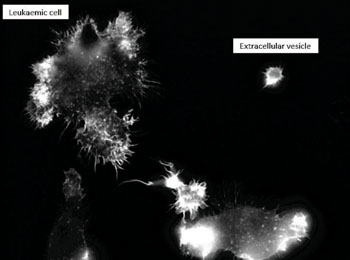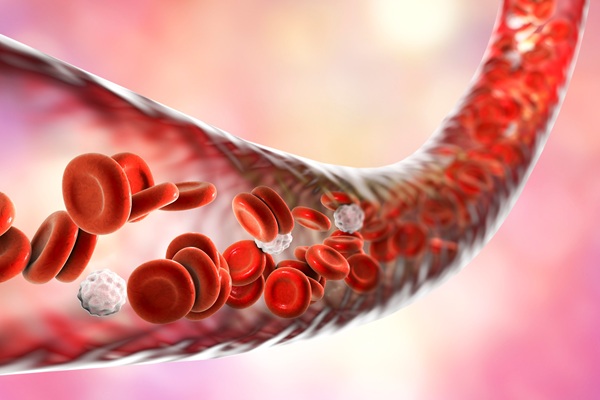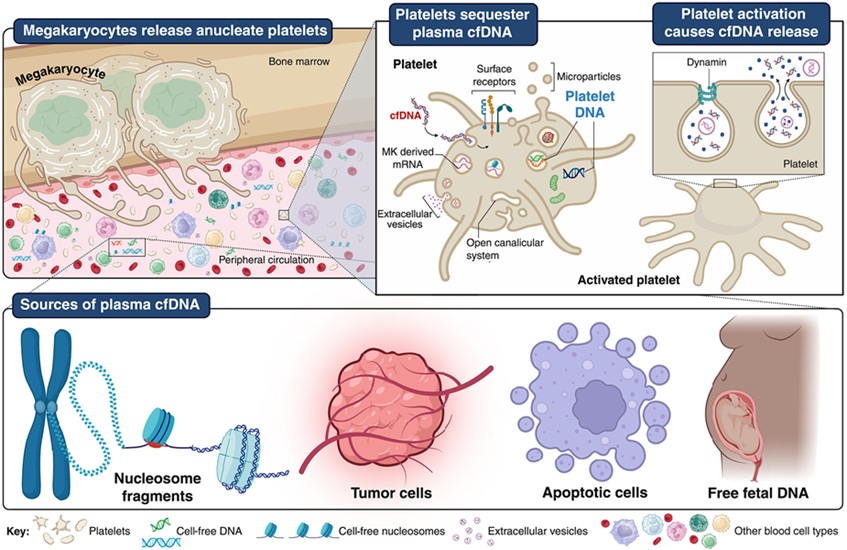Novel Leukemic Blood Test Has Massive Diagnostic Potential
By LabMedica International staff writers
Posted on 07 Sep 2016
The potential of a new test, which could revolutionize the way doctors diagnose and monitor common childhood leukemia, has been explored. The test is based on the fact that cancerous acute lymphoblastic leukemia cells produce and release special structures that can be traced in the blood.Posted on 07 Sep 2016
The discovery could have major implications on the diagnosis, monitoring, drug delivery and treatment of childhood leukemia. Though there is an 85% to 90% success rate in treatment, children must endure repeat bone marrow biopsies to assess the progress of treatment. This discovery might reduce the frequency of the painful procedures, which can also cause bruising, bleeding and infection.

Image: A photomicrograph of a leukemic cell and an extracellular vesicle (Photo courtesy of University of Manchester).
Scientists at the University of Manchester (UK) and their colleagues have investigated the use of extracellular vesicles, which were thought to be worthless debris, as a diagnostic biomarker. Their presence in the plasma from bone marrow biopsies was discovered their ability to circulate in the blood. The vesicles, which contain the protein actin and have identifiable characteristics of their parent cell, are typified by branching structures. The team also hopes that the vesicles might provide individualized information about the tumors, eventually helping doctors to deliver personalized care.
Suzanne M. Johnson, PhD, the lead author of the study, said, “Our discovery of Extracellular Vesicles could be a game changer in terms of the way we care for children with lymphoblastic leukemia. Our studies have shown that cancerous leukemia cells have the ability to package parts of themselves and then send these structures, the vesicles, to anywhere in the body though the blood. That opens up a world of possibilities in terms of monitoring the progress of the disease and making diagnosis quickly and efficiently. They are also internalized by other cells and act as an effective route for cell communication. Now the challenge is to investigate whether other cancers produce and release these structures as well.” The study was published on July 21, 2016, in the journal Blood.
Related Links:
University of Manchester













